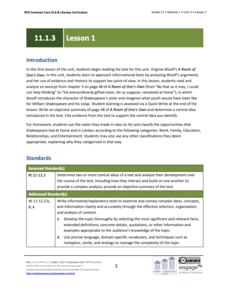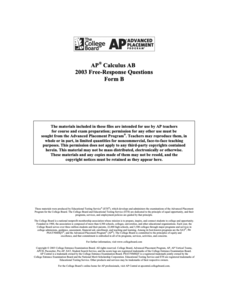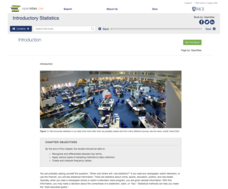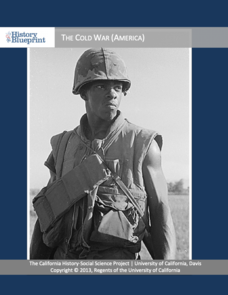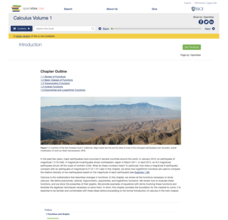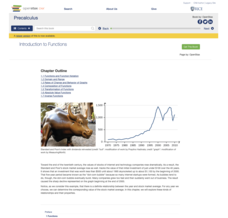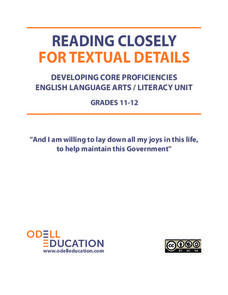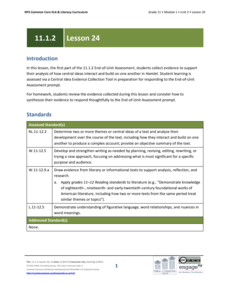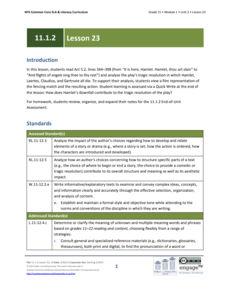EngageNY
Grade 11 ELA Module 1: Unit 3, Lesson 7
How might two completely different texts address similar topics and themes? Using the penultimate instructional activity from the eight-part Grade 11 ELA Module 1: Unit 3 series, scholars review the central ideas they developed in a...
EngageNY
Grade 11 ELA Module 1: Unit 3, Lesson 5
There's a fine line between madness and genius. Using the resource, scholars complete a mid-unit assessment based on their study of Virginia Woolf's A Room of One's Own. They write a multi-paragraph response, analyzing how two central...
EngageNY
Grade 11 ELA Module 1: Unit 3, Lesson 4
How have society's expectations influenced female writers? Pupils explore the topic by reading chapter three of Virginia Woolf's A Room of One's Own. Scholars complete a Quick Write to analyze how Judith Shakespeare's experiences...
EngageNY
Grade 11 ELA Module 1: Unit 3, Lesson 3
Virginia Woolf didn't believe a woman could have written Shakespeare's works. Using the resource, scholars engage in a silent discussion to analyze how Woolf uses rhetoric to convey her point of view in A Room of One's Own. Pupils write...
EngageNY
Grade 11 ELA Module 1: Unit 3, Lesson 1
What was Shakespeare's youth like? Virginia Woolf considers the question in her nonfiction text, A Room of One's Own. Scholars begin reading Woolf's work before analyzing some of the text. Next, they write an objective summary and...
College Board
2009 AP® Calculus AB Free-Response Questions Form B
Get a free peek into a calculus exam. Released free-response items from the AP® Calculus AB exam provide teachers and pupils examples of how topics may appear. The six questions cover topics such as growth rates, volumes of rotations,...
College Board
2006 AP® Calculus AB Free-Response Questions Form B
An exam divides the six free-response questions into calculator use and no calculator use items. The non-calculator items are conceptual in nature and test whether pupils understand the calculus concepts. Scholars explain their answers...
College Board
2003 AP® Calculus AB Free-Response Questions Form B
Get a better grasp of the intended content. The six free-response questions provide insight into the purpose of the AP® Calculus content. Two questions have real-world context while the remaining are void of context. The items range from...
PBS
Setting in To Kill a Mockingbird
Can you understand more about how a person acts by learning about how that person lives? An interactive resource explores the setting of Harper Lee's To Kill a Mockingbird with several slides discussing the location, social...
Rice University
Introductory Statistics
Statistically speaking, the content covers several grades. Featuring all of the statistics typically covered in a college-level Statistics course, the expansive content spans from sixth grade on up to high school. Material...
Rice University
College Algebra
Is there more to college algebra than this? Even though the eBook is designed for a college algebra course, there are several topics that align to Algebra II or Pre-calculus courses. Topics begin with linear equation and inequalities,...
PBS
Extranjeros and Expansion
A three-part lesson gives light to the Unites States expansion from the view of Texans, New Mexicans, and Californians. Through videos and written activities, scholars work collaboratively to research specific individuals and their...
University of California
The Cold War (America)
The Cold War—with its roots in World War II—impacts the world today. Using an extensive curriculum, scholars consider its impact through primary sources, including speeches and propaganda, as well as other skills-enhancing activities. An...
Rice University
Calculus Volume 3
See calculus to the end. The eBook is the last of a three-volume series covering college-level calculus topics. Scholars begin with parametric equations and polar coordinates before moving to vectors, finally ending with multi-variable...
Rice University
Calculus Volume 2
Delve into the middle of calculus. The resource is the second eBook of three that covers the complete calculus content. Seven chapters begin with integrals and different methods of integration before moving on to differential equations....
Rice University
Calculus Volume 1
Differentiate between calculus concepts. The beginning of a helpful calculus resource begins with a short review of functions and moves right into limits to define derivatives. The six-chapter resource continues with applications of...
Rice University
Precalculus
Take a step beyond Algebra 2. Learners use the eBook to learn concepts from the typical Precalculus course. Content starts off with a short review of functions in general and moves on to the basic functions, finishing up with more...
Rice University
Algebra and Trigonometry
Move on into trigonometry. An informative eBook takes the content of a College Algebra course and adds more relating to trigonometry and trigonometric functions. The content organization allows pupils to build upon their learning by...
Rice University
Intermediate Algebra
Algebra concepts are all wrapped up in one nice bow. The resource combines all the concepts typically found in Algebra I and Algebra II courses in one eBook. The topics covered begin with solving linear equations and move to linear...
Odell Education
Reading Closely for Textual Details: "And I am willing to lay down all my joys in this life..."
Look closely, some details are hidden! Scholars learn how to find attributes by first examining characteristics in illustrations and then move to locating details in text with close reading. The teacher models good practices for...
EngageNY
Grade 11 ELA Module 1: Unit 2, Lesson 25
Revenge, mortality, madness—what are the central ideas from Shakespeare's Hamlet? Scholars answer the question by writing multi-paragraph responses. They also identify and discuss literary devices from the play.
EngageNY
Grade 11 ELA Module 1: Unit 2, Lesson 24
How do central ideas build on each other in Shakespeare's Hamlet? Scholars begin the first part of an end-of-unit assessment. They complete a Central Idea Evidence Collection Tool worksheet to prepare for a writing activity to discuss...
EngageNY
Grade 11 ELA Module 1: Unit 2, Lesson 23
All's well that ends does not apply to Shakespeare's Hamlet. Scholars read Act 5.2 using the resource, discovering the play's tragic resolution. Pupils complete a Quick Write analyzing how Hamlet's downfall contributes to the play's...
EngageNY
Grade 11 ELA Module 1: Unit 2, Lesson 22
Scholars explore Act 5.2 of Shakespeare's Hamlet, in which Hamlet and Laertes injure each other with a poisoned blade. To finish the lesson plan, pupils also write about two central ideas from the play.




